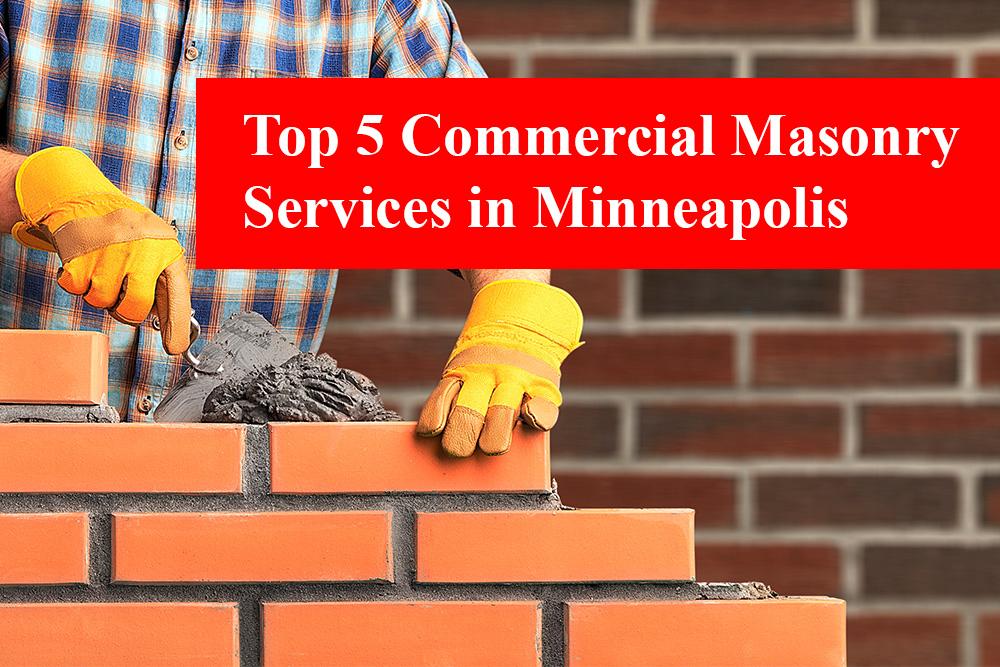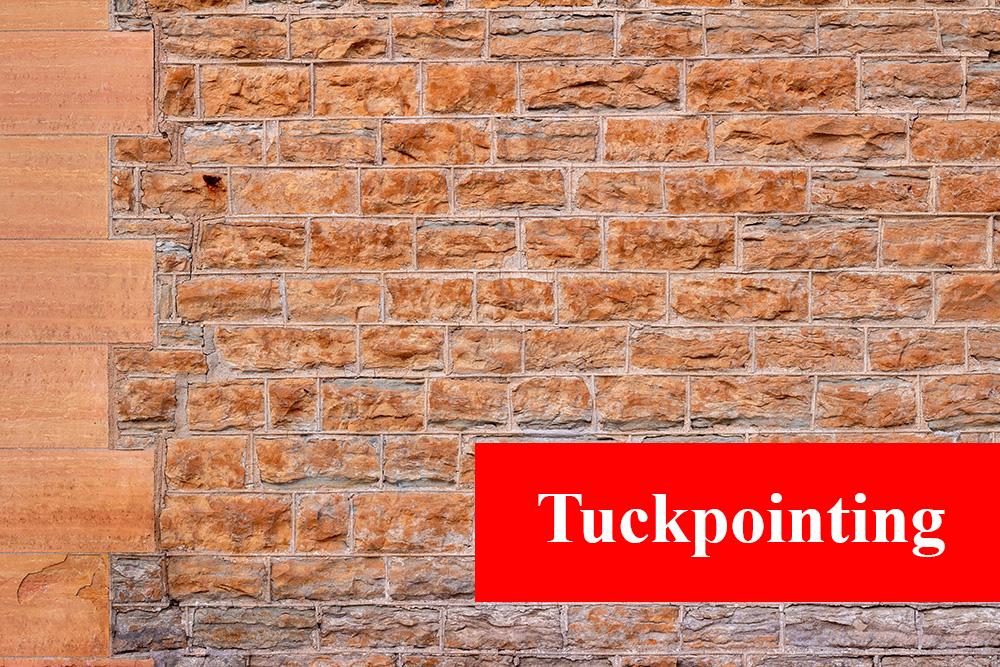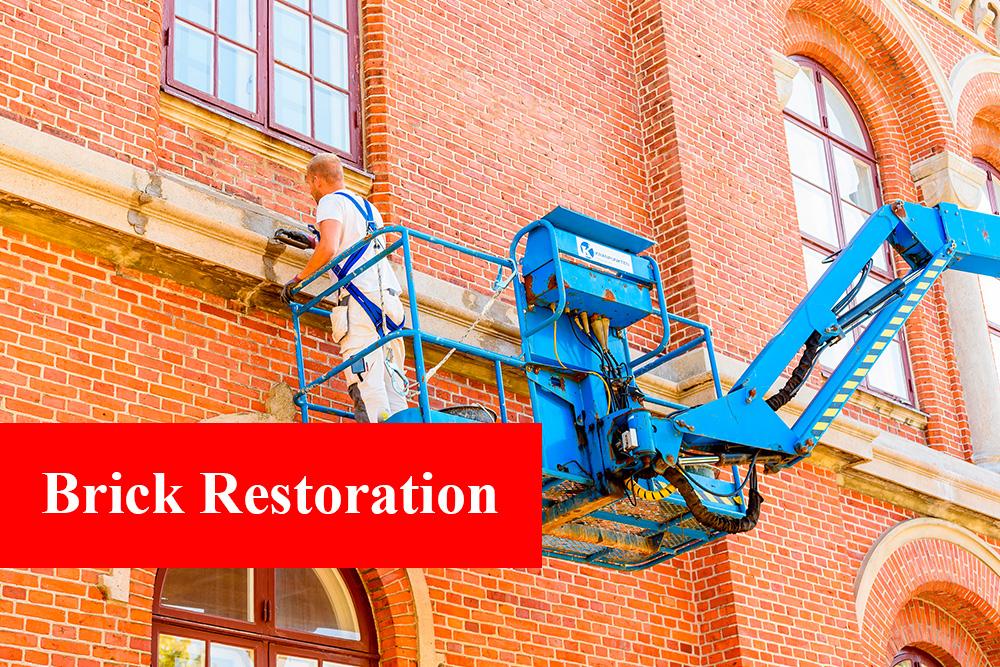
The effects of hot, wet, and freezing weather in the upper Midwest take a significant toll on commercial masonry structures. Over time these and other environmental factors can cause bricks to spall and mortar to deteriorate. Spalling of bricks occurs as a result of the pours in the bricks absorbing moisture and freezing, causing the brick’s surface to flake off. Mortar is the cement mixture used in masonry that holds the bricks, blocks, or stone together, and time and weather can also cause it to fail, similar to bricks. If left to go too long, mortar can sometimes become so deteriorated that all that remains is the sand, and there is nothing holding the bricks together. In order to keep buildings from falling into a state of disrepair, it is crucial to have masonry buildings professionally maintained regularly. To help you understand what your building requires, here are the top five commercial masonry services in Minneapolis:
Commercial Tuckpointing
The terms “pointing”, “repointing”, and “tuckpointing” are often used interchangeably. However, the three procedures produce different results. Pointing refers to filling in the actual spaces, or mortar joints, between the bricks in a finished wall during new construction. Repointing refers to the process of removing the old mortar from joints and replacing it with new mixture. Tuckpointing brick is designed to improve the structure’s appearance by removing some of the deteriorated mortar and then filling the joints with fresh mortar that has been color-matched to the brick. A thin line of putty of a contrasting color is then inserted down the middle of the joint to create the illusion of a sharp and narrow joint.

While the method can be used on any type of brick, tuckpointing is most often used on historical commercial masonry buildings to recreate the appearance of the original thin mortar joints. While both the repointing and tuckpointing procedures involve removing deteriorating mortar and replacing it with a fresh mixture, repointing is just replacing the old mortar. It does not involve creating contrasting lines down the center of the joints. Commercial tuckpointing should be left to a professional because it is such a precise procedure and matching the mortar to the brick color takes a fair amount of expertise. This is especially true for buildings of historical significance.
Brick Restoration

Brick restoration work is done to maintain the structural integrity of the building while improving the appearance of the structure. Brick restoration involves:
- Bringing back the original appearance and structural integrity of the bricks by revitalizing the color of bricks.
- Replacing any loose bricks.
- Repairing damage to damaged bricks and replacing the mortar.
Brick restoration can allow brick structures to last for decades, sometimes even centuries, and restore older structures close to their original appearance. As the mortar holds a brick structure together, the primary purpose of brick restoration is to repoint the bricks by replacing the old mortar with a fresh and stronger mixture.
Replacing old mortar is essential as the mixture can degrade over time from exposure to weather, lack of maintenance, or accidents. This can cause dangerous issues with structural integrity and give the building a lackluster appearance. Because bricks are porous and absorb moisture, the biggest threat to brick and mortar buildings is damage from water and freezing temperatures. Both bricks and mortar are also vulnerable to collecting other contaminants such as dirt and pollutants like road salts. These can all cause the bricks to weaken over time and result in a dull appearance and possible catastrophic failure.
Waterproofing
Waterproofing services are designed to prevent the intrusion of water into parts of a building that are meant to stay dry. However, mortar and sealants break down over time and the key to preventing damage and costly repairs down the road lies in finding and fixing the problem and using the proper sealant(s) for your specific application. A thorough commercial waterproofing program always begins with a professional inspection of the entire building.

Moisture issues typically occur when one material or system transitions into another, and failure to maintain an adequate waterproof seal in these areas will invariably lead to leaks. These areas include places where a window frame meets masonry or between the mortar and brick. If water leakage issues are found, repairs may involve removing, repairing, and/or replacing water-damaged materials, applying sealants, and hydro-testing to ensure the repair was effective. Because experience is the key to any successful project involving waterproofing in Minneapolis, employing the expertise of a waterproofing contractor will aid you in determining the best course of action while helping you keep to your budget.
Floor Restoration
Studies have shown a well-maintained floor makes the best impression, and facility ratings can drop by as much as 75 percent if your floor creates a negative impression. Additionally, a floor in disrepair can lead to accidents, insurance claims, lawsuits, and increased insurance rates. Floor restoration requires stripping the surface, repairing any damaged areas, and refinishing the floor. As an entire floor restoration can be expensive, the best course of action is to establish a full floor maintenance program to keep the floor both clean and safe for workers and visitors.

Because commercial floors are constantly bombarded with dirt, chemicals, and moisture, a proper maintenance program requires stripping and waxing the floor every six to 12 months for low- to medium-traffic floors and every four to six months for high-traffic floors. In order to ensure the right products are used that will work best together for your application and at the correct intervals, it is imperative that an experienced floor restoration expert be consulted.
Commercial Masonry For Historic Preservation
Because of the significant monetary value as well as the cultural importance and architectural significance, it is crucial to protect historic buildings from entering a state of disrepair. Additionally, when a historical property was built, it was designed to serve a specific purpose. However, over time the purpose of the building may change, and any modifications that are done to the structure to meet its new purpose must not alter the building’s historical significance.
Because buildings placed on the National Register of Historic Places must adhere to strict guidelines, restoring a historic building is not something property owners and managers should undertake on their own. As the application process is rigorous, maintaining the status and value placed on a historic building is well worth the cost of hiring a professional with the needed experience in maintaining and repairing historic buildings.
To ensure the integrity of their building, property owners and managers must consider how a professional commercial masonry restoration company will add value to their property while reducing any inherent risks associated with maintenance and repair. If you are in need of commercial tuckpointing, waterproofing services, or other restoration services for masonry in Minneapolis, Epic Masonry Restoration has years of experience in providing all types of commercial masonry services. Their expert technicians are trained to help you maximize the value and maintain the integrity of your building while ensuring that all the suitable materials and best practices are used to help you lower costs and associated risks. Contact Epic at 612-662-7420 for a free consultation, or visit them online at EpicMasonryRestoration.com.

